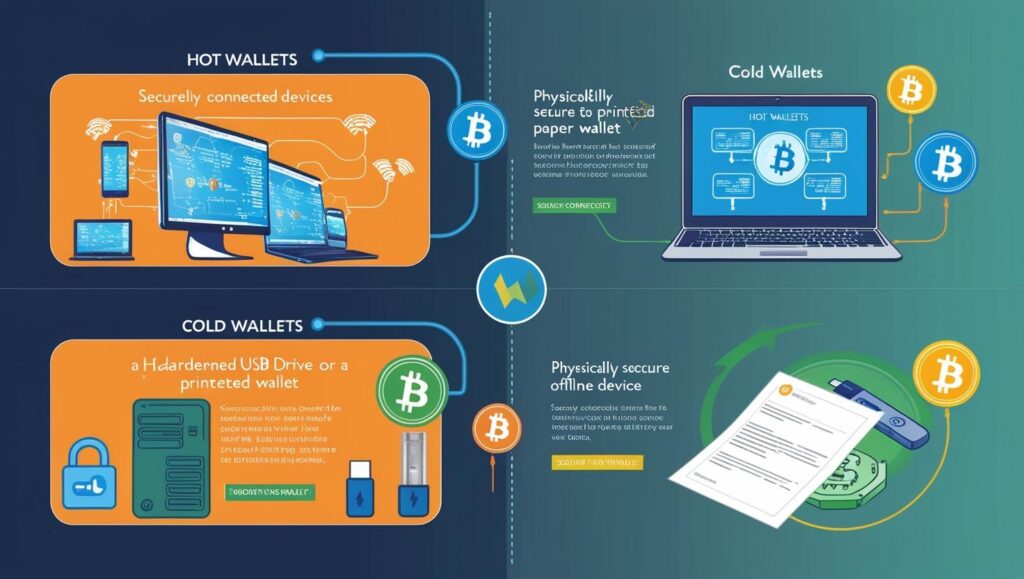STORING YOUR CRYPTOCURRENCY SAFELY
Hot Wallets

Hot wallets are digital wallets that are connected to the internet. They are convenient for frequent transactions and easy access to your cryptocurrency. Here are some key points about hot wallets:
- Accessibility: Hot wallets are always online, making them ideal for daily transactions and trading.
- Examples: Popular hot wallets include Coinbase Wallet, MetaMask, and Trust Wallet2.
- Security: While convenient, hot wallets are more vulnerable to hacking and online threats due to their constant internet connection.
- Usage: Best suited for users who need quick access to their crypto assets and are comfortable with the associated security risks.
Cold Wallets
Cold wallets, also known as cold storage, are offline wallets that provide a higher level of security. They are ideal for long-term storage of cryptocurrency. Here are some key points about cold wallets:
- Security: Cold wallets are not connected to the internet, making them highly secure against hacking and online threats.
- Examples: Popular cold wallets include hardware wallets like Ledger Nano S, Trezor, and paper wallets2.
- Usage: Best suited for users who want to store large amounts of cryptocurrency securely for a long period.
- Accessibility: Cold wallets require more effort to access and use, as they need to be connected to a device to perform transactions.
Choosing Between Hot and Cold Wallets
The choice between hot and cold wallets depends on your needs and preferences:
- Hot Wallets: Choose a hot wallet if you need frequent access to your cryptocurrency for trading or daily transactions.
- Cold Wallets: Choose a cold wallet if you prioritize security and plan to hold your cryptocurrency for a long time without frequent transactions.
Best Practices for Using Crypto Wallets
Regardless of the type of wallet you choose, here are some best practices to keep your cryptocurrency safe:
- Use Strong Passwords: Ensure your wallet is protected with a strong, unique password.
- Enable Two-Factor Authentication (2FA): Add an extra layer of security by enabling 2FA.
- Backup Your Wallet: Regularly backup your wallet and store the backup in a secure location.
Keep Software Updated: Ensure your wallet software is always up to date to protect against vulnerabilities.